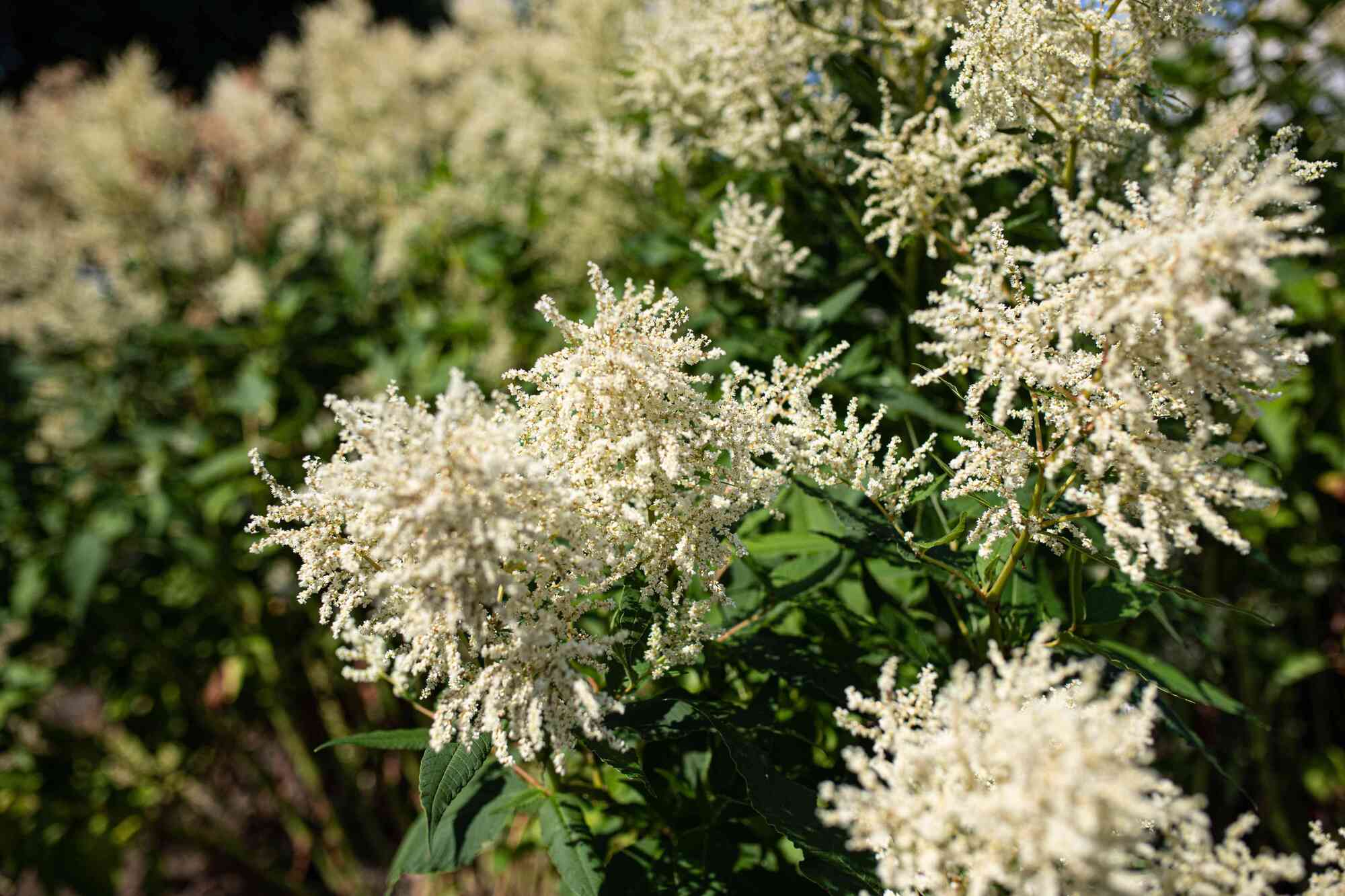
Goat's beard, also known as Aruncus dioicus, is a fascinating plant that often catches the eye with its feathery, white blooms. But what makes this plant so special? Goat's beard thrives in shady, moist environments, making it a perfect addition to woodland gardens. It can grow up to six feet tall, creating a striking backdrop for other plants. This perennial is not only beautiful but also hardy, capable of withstanding cold winters. Goat's beard attracts pollinators like bees and butterflies, contributing to a healthy ecosystem. Additionally, it requires minimal maintenance, making it ideal for both novice and experienced gardeners. Ready to learn more? Let's dive into 38 intriguing facts about this remarkable plant!
What is Goat's Beard?
Goat's beard, also known as Aruncus dioicus, is a perennial plant that belongs to the rose family. It is often found in woodlands, meadows, and along streams. This plant is known for its tall, feathery plumes of white flowers that bloom in late spring and early summer.
- Scientific Name: The scientific name for Goat's beard is Aruncus dioicus.
- Family: It belongs to the Rosaceae family, which is the same family as roses.
- Native Regions: Goat's beard is native to North America, Europe, and Asia.
- Flowering Season: The plant typically blooms from late spring to early summer.
- Height: It can grow up to 6 feet tall, making it a striking addition to any garden.
- Leaves: The leaves are large, compound, and fern-like, adding to its ornamental appeal.
- Flower Color: The flowers are usually white, but can sometimes appear cream-colored.
- Pollinators: Bees and butterflies are attracted to Goat's beard, making it a great plant for pollinator gardens.
- Dioecious Plant: This means that Goat's beard has separate male and female plants.
- Seed Production: Only female plants produce seeds, while male plants are more showy with larger flower clusters.
Growing Conditions
Understanding the growing conditions for Goat's beard can help you cultivate this plant successfully in your garden.
- Soil Type: Goat's beard prefers moist, well-drained soil.
- Sunlight: It thrives in partial to full shade, making it ideal for woodland gardens.
- Watering Needs: Regular watering is essential, especially during dry spells.
- Hardiness Zones: It is hardy in USDA zones 3-7.
- pH Levels: The plant prefers slightly acidic to neutral soil, with a pH range of 5.5 to 7.0.
- Mulching: Mulching around the base helps retain moisture and keep the roots cool.
- Spacing: Plants should be spaced about 2-3 feet apart to allow for proper air circulation.
- Fertilization: A balanced, slow-release fertilizer applied in early spring can promote healthy growth.
- Pruning: Deadheading spent flowers can encourage more blooms and prevent self-seeding.
- Pests and Diseases: Goat's beard is relatively pest-free but can be susceptible to powdery mildew in humid conditions.
Uses and Benefits
Goat's beard is not just a pretty face; it has several practical uses and benefits.
- Ornamental Use: Its tall, feathery plumes make it a popular choice for ornamental gardens.
- Erosion Control: The plant's extensive root system helps prevent soil erosion.
- Wildlife Habitat: Provides shelter and food for various insects and small animals.
- Cut Flowers: The flowers can be used in floral arrangements, adding a touch of elegance.
- Medicinal Uses: Traditionally, parts of the plant have been used in herbal medicine to treat various ailments.
- Shade Gardens: Ideal for planting in shaded areas where other plants may struggle.
- Naturalizing: It can be used to naturalize areas, creating a more wild and natural look.
- Companion Planting: Pairs well with other shade-loving plants like hostas and ferns.
- Low Maintenance: Once established, Goat's beard requires minimal care.
- Air Purification: Like many plants, it helps improve air quality by filtering pollutants.
Interesting Facts
Here are some lesser-known facts about Goat's beard that might surprise you.
- Name Origin: The name "Goat's beard" comes from the plant's fluffy, beard-like flower clusters.
- Historical Use: Native Americans used the plant for various medicinal purposes.
- Cultural Significance: In some cultures, it is considered a symbol of masculinity due to its name and appearance.
- Longevity: Goat's beard can live for many years, making it a long-term investment for your garden.
- Hybrid Varieties: There are several hybrid varieties available, offering different flower colors and sizes.
- Deer Resistant: The plant is generally resistant to deer, making it a good choice for areas with high deer populations.
- Edible Parts: Young shoots of Goat's beard are edible and can be cooked like asparagus.
- Drought Tolerance: While it prefers moist soil, Goat's beard can tolerate short periods of drought once established.
The Final Word on Goat's Beard
Goat's beard, with its striking appearance and fascinating history, is more than just a pretty plant. From its medicinal uses to its role in folklore, this plant has woven itself into various aspects of human life. Whether you're a gardener looking to add some flair to your garden or a nature enthusiast curious about its unique characteristics, Goat's beard offers something for everyone. Its ability to thrive in different environments and its pollinator-friendly nature make it a valuable addition to any landscape. Next time you come across this plant, you'll appreciate its beauty and the rich tapestry of facts that surround it. So, keep an eye out for Goat's beard on your next outdoor adventure. You might just see it in a whole new light.
Was this page helpful?
Our commitment to delivering trustworthy and engaging content is at the heart of what we do. Each fact on our site is contributed by real users like you, bringing a wealth of diverse insights and information. To ensure the highest standards of accuracy and reliability, our dedicated editors meticulously review each submission. This process guarantees that the facts we share are not only fascinating but also credible. Trust in our commitment to quality and authenticity as you explore and learn with us.
